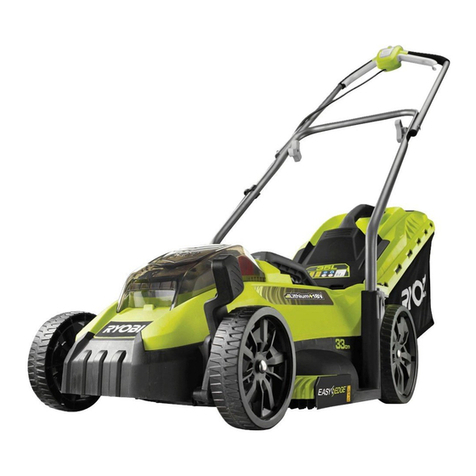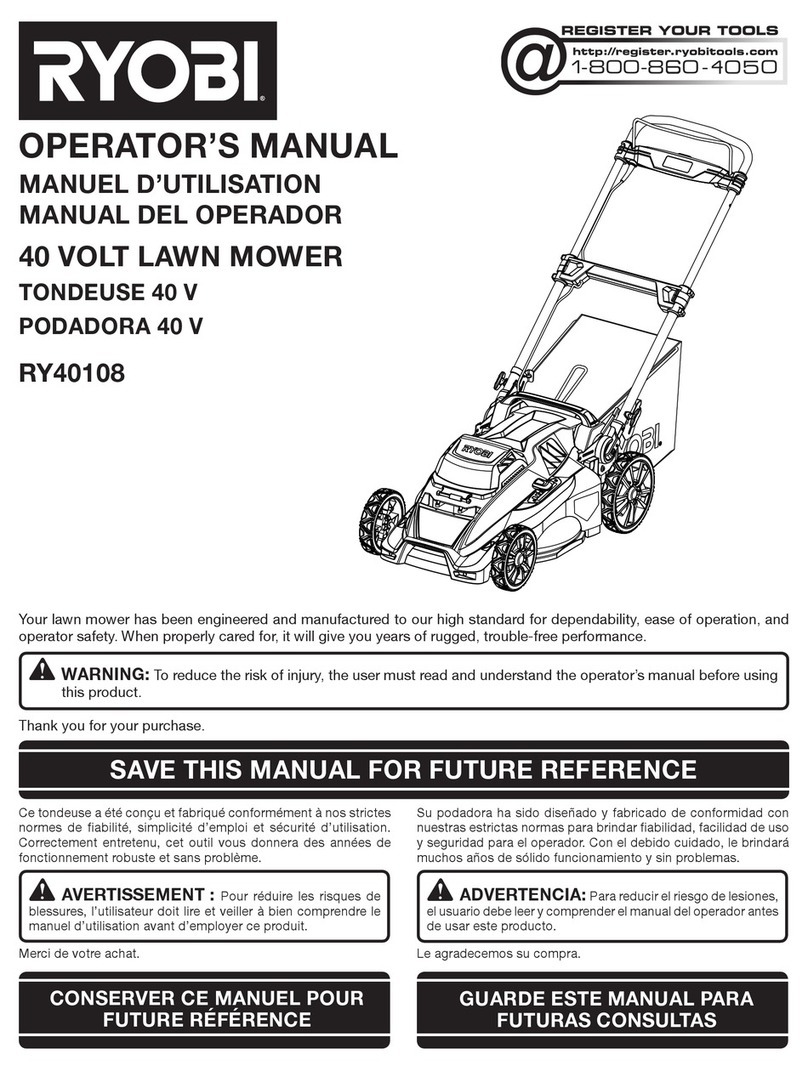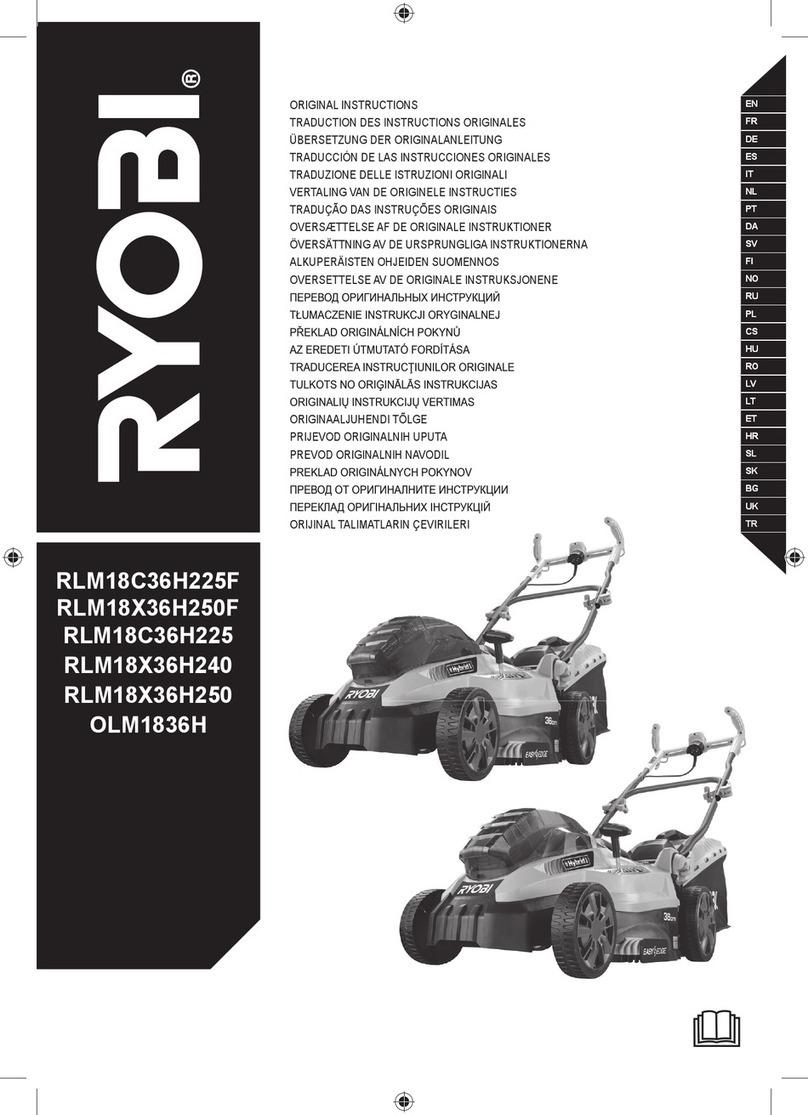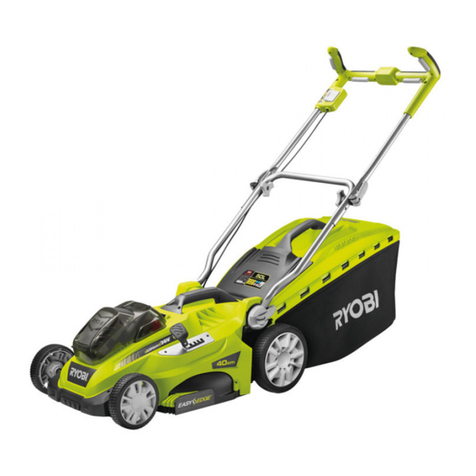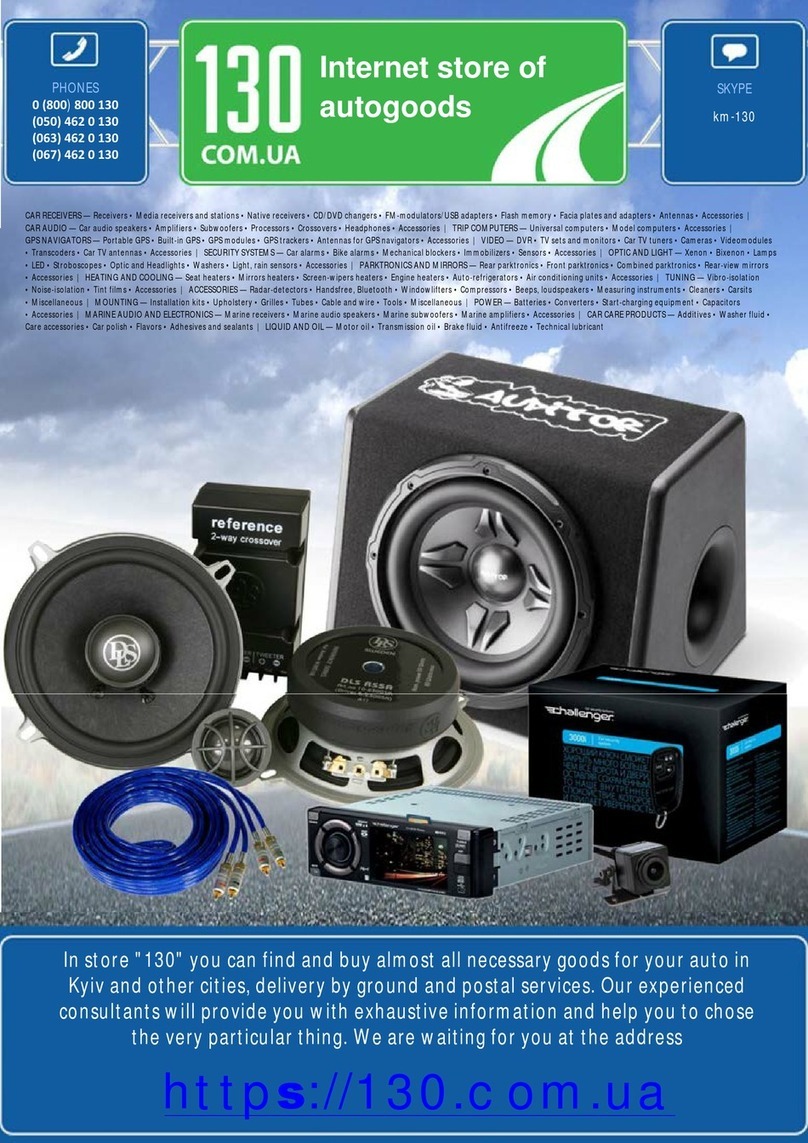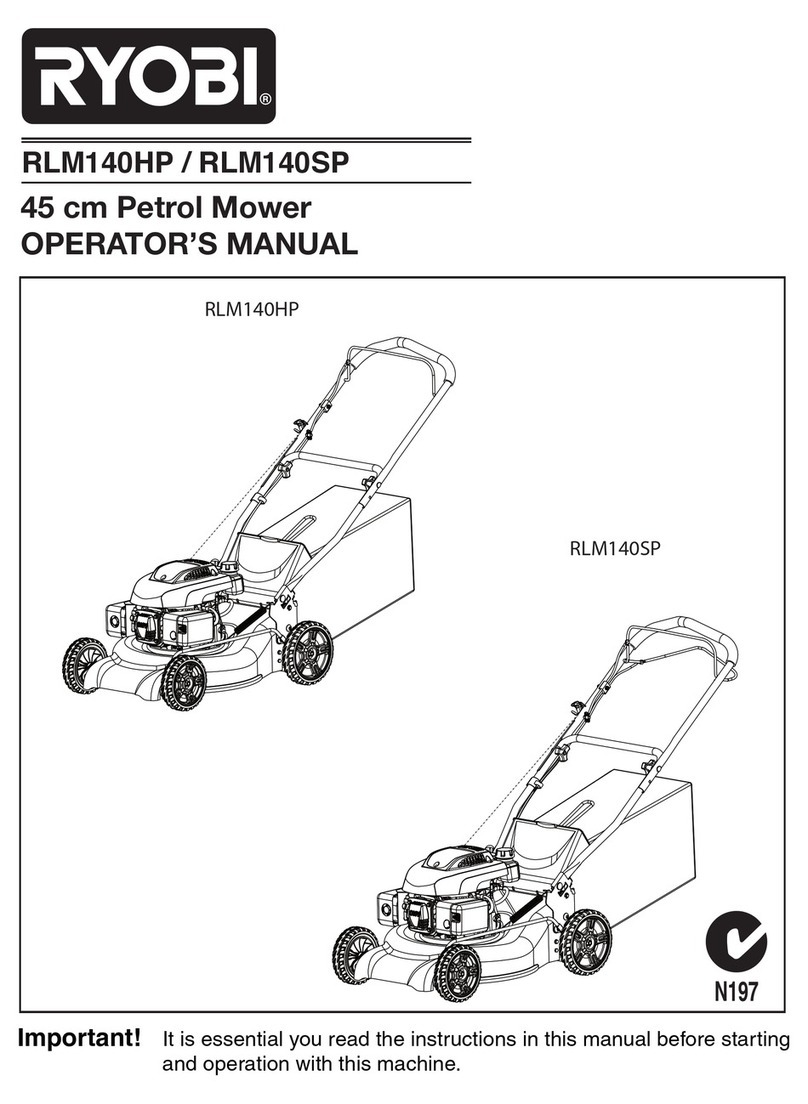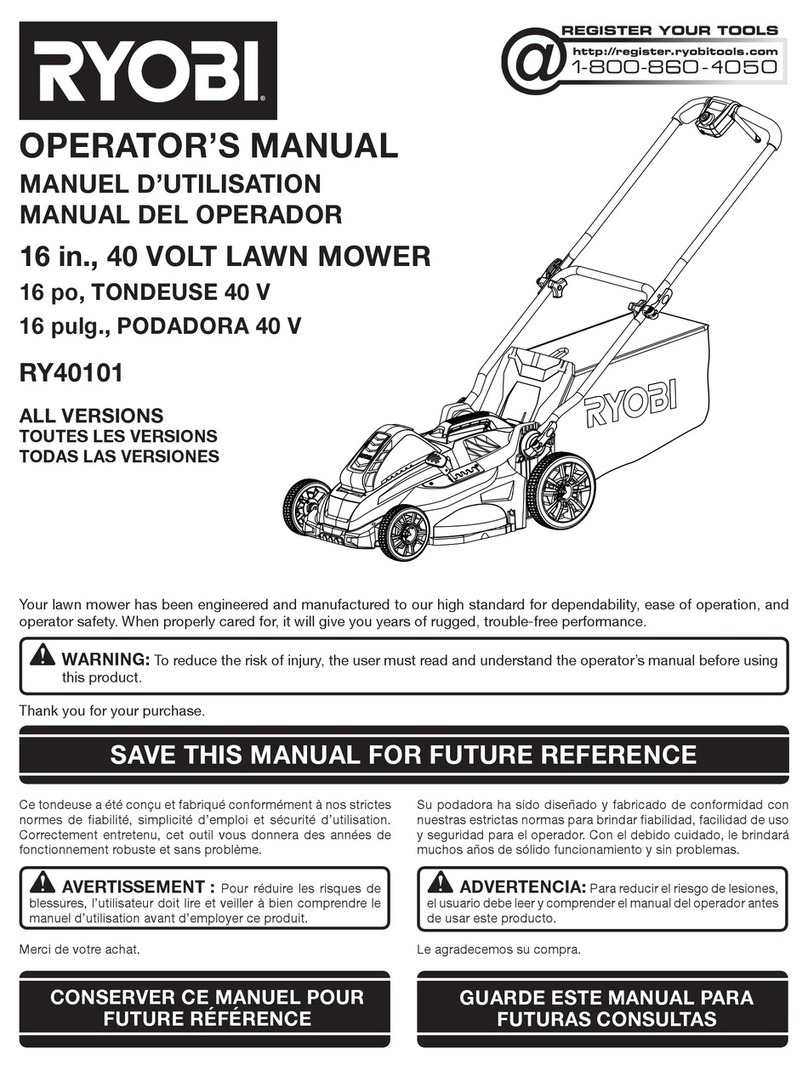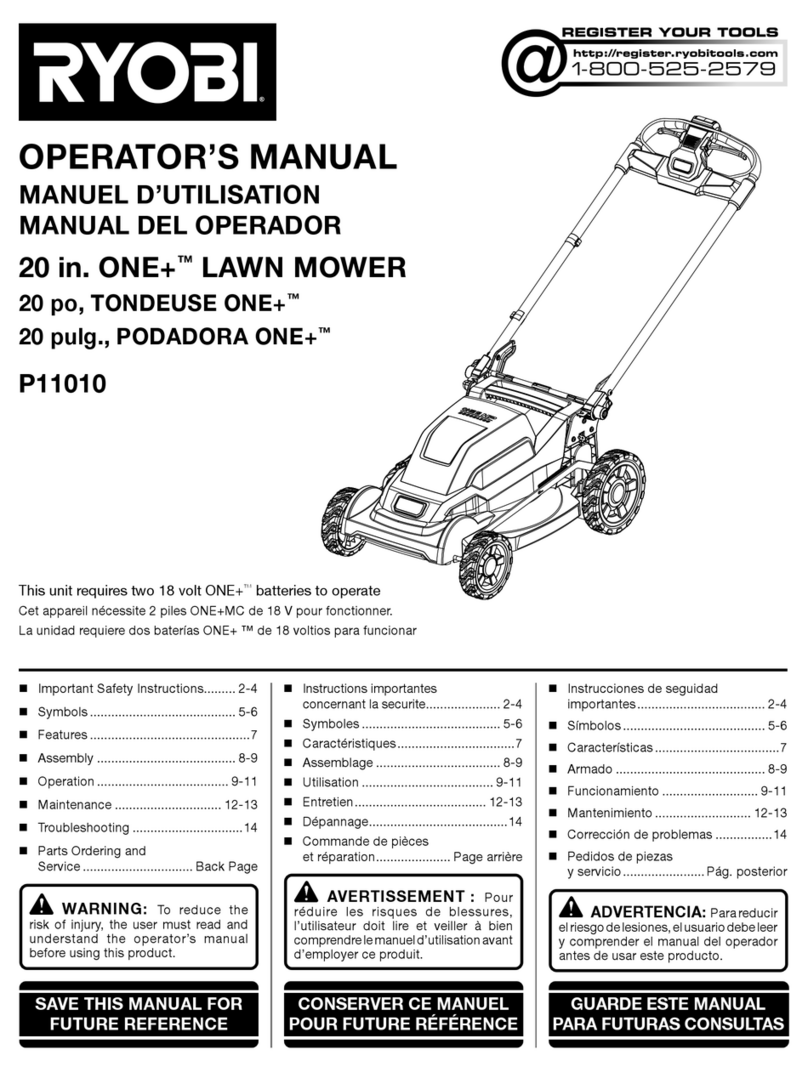
is responsible for accidents or hazards
occurring to other people or their property.
■Tragic accidents can occur if the operator
is not alert to the presence of children.
Children are often attracted to the product
and the mowing activity. Never assume
that children will remain where you last saw
them.
■Keep children out of the mowing area and
under the watchful care of a responsible
adult other than the operator, be alert and
turn the product off if a child enters the
area.
■Use extra care when approaching blind
corners, shrubs, trees, or other objects
including overhanging shrubs, which may
block your view.
BATTERY TOOLS USE AND CARE
■Read, understand, and always follow
the safety instructions which came with
your battery and charger. Failure to do
so may result in electric shock, fire or
other hazardous situations. Keep all the
instructions together in a safe place for
future reference.
■Battery-operated products do not have to be
plugged into an electrical outlet; therefore,
they are always in operating condition.
Remove the isolator key whenever you are
not operating the product.
■Remove the battery pack before making
any adjustments, cleaning, or removing
material from the product.
■Ensure the isolator key is removed before
inserting battery pack.
■A battery pack must be recharged only with
the charger specified by the manufacturer.
Using a charger with an incompatible
battery pack may create a risk of fire. Use
battery pack only with charger listed.
■Use only battery pack intended specifically
for the product. Use of any other battery
packs may result in a risk of fire, electric
shock, or injury to persons.
■When battery pack is not in use, keep it away
from other metal objects like, paper clips,
coins, keys, nails, screws, or other small
metal objects, that can make a connection
from one terminal to another. Shorting the
battery pack terminals together may cause
sparks, burns, fire or explosion.
■Do not place battery products or their
batteries near fire or heat. This increases
the risk of explosion and possibly injury.
■Do not open or mutilate the battery pack.
Released electrolyte is corrosive and may
cause damage to the eyes or skin. It may
be toxic if swallowed.
■Protect the battery pack against moisture
and water. Do not charge the product in a
damp or wet location. Following this rule
will reduce the risk of electric shock.
■In case of damage and improper use of the
battery, vapour may be emitted. Provide
for fresh air and seek medical help in case
of complaints. The vapour can irritate the
respiratory system.
■Do not leave the battery pack inside a
vehicle in hot or cold conditions.
■Do not incinerate the battery.
■Under abusive conditions, liquid may be
ejected from the battery; avoid contact.
If contact accidentally occurs, flush with
water. If liquid contacts eyes, additionally
seek medical help. Liquid ejected from the
battery may cause irritation or burns.
LAWN MOWER SAFETY WARNINGS
■Before use, always visually inspect to
ensure blades, blade bolts, and cutter
assembly are not worn or damaged.
■Replace worn or damaged blades and
bolts in sets to preserve balance.
■The blade on the product is sharp. Use
extreme caution and wear heavy-duty
gloves when fitting, replacing, cleaning, or
checking bolt security.
■Bring the product to an authorised service
centre to replace damaged or unreadable
labels.
■Check all nuts, bolts, and screws at
frequent intervals for proper tightness to
be sure that the product is in safe working
condition.
■Frequently check the grass catcher for
wear, holes or deterioration.
■Replace worn or damaged parts before
operating the product.
■The product must be started with the user
behind the handlebars in the operator
safety zone. Never start the product if:
●all four wheels are not on the ground
2
